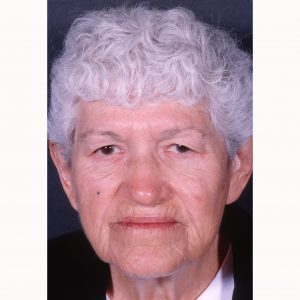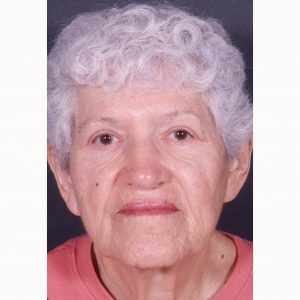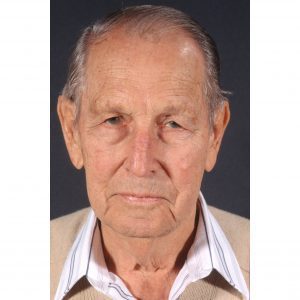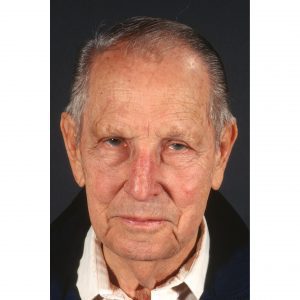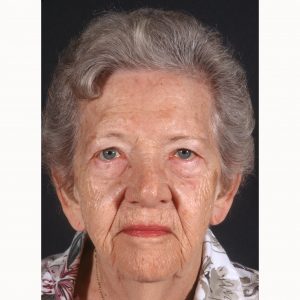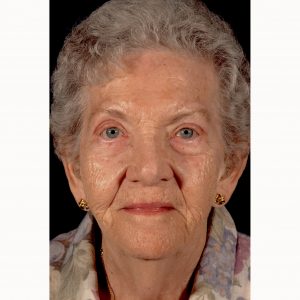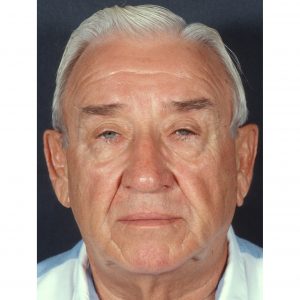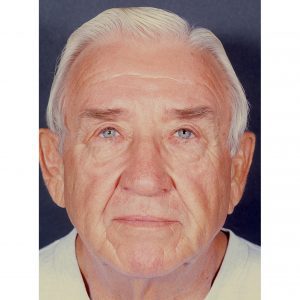Eyelid Surgery in Palos Verdes
Blepharoplasty in Palos Verdes, CA
A low-positioned upper eyelid margin that covers part or all of the pupil is known as ‘ptosis’ and can be present at birth or develop in one or both eyes at any point in life. However, ptosis is most frequently the result of aging or in response to external factors, including sun damage and unhealthy lifestyle choices (involutional ptosis). More commonly, these factors lead to another eyelid deformity called ‘blepharochalasis,’ which is a redundancy of eyelid skin and fat that may overhang a normally positioned upper eyelid margin causing a cosmetic and sometimes a functional problem.
It is important to distinguish between these two conditions, which in seniors may occur together.
An operation to correct ptosis is a ‘ptosis correction,’ while that to enhance the appearance of the eyelids in blepharochalasis is a ‘blepharoplasty.’ The operations are often combined. A blepharoplasty can also tackle redundant skin and fat bags in the lower eyelids to restore a youthful appearance.
Dr. Brian Boyd is a board-certified plastic surgeon with many years of experience performing upper and lower eyelid surgery (both ptosis correction and blepharoplasty) while serving the Palos Verdes and greater Los Angeles area.
What Causes Our Eyelids to Age?
As we age, the skin on our eyelids tend to lose elasticity while the muscles around our eyes become thicker and redundant due to overactivity such as squinting in bright sunlight. (Wear sunglasses!). The eyeball is naturally cushioned in its bony cavity (the orbit) with a surrounding layer of fat.
With aging, weakness in the retaining ligaments causes this shock-absorbing fat to bulge above and below the eyes, resulting in the appearance of bags under the eye with excessive fullness above them.
Chronic sun damage to the skin produces a loss of elasticity leading to sagging and eventually hooding. However, patients do differ with some having bulging fat pads in the upper eyelids and others having a deficiency of fat there, giving them a hollowed-out appearance. Issues with muscle fat and skin need to be considered, together with any degree of ptosis, in order to tailor the operation to the individual.
Eyelid lift surgery (blepharoplasty) is designed to rejuvenate the eyes by removing excess fat and muscle above and/or below the eyes and tightening loose skin. The operation may involve just the upper eyelids (upper blepharoplasty), the lower eyelids (lower blepharoplasty) or all four (quad blepharoplasty).
What Can Eyelid Surgery Treat?
Drooping Upper Eyelids
Drooping eyelid tissue that hangs over the eyes can detract from the eyes’ natural beauty and, when severe, can interfere with one’s peripheral vision. This condition is treated by ptosis repair, blepharoplasty or both depending on the cause.
Under-Eye Puffiness
Lower blepharoplasty can eliminate bags and puffiness under the eyes and reduce the shading that causes the appearance of dark circles. This procedure produces a more flattering eyelid contour and allows you to look more rested and alert.
Wrinkles Around the Eyes
The thin skin around the eyes is often the first area on the face to develop fine lines and wrinkles. While injectable fillers offer a temporary solution, eyelid surgery can permanently eliminate these lines and wrinkles for a more youthful appearance.
What is the Blepharoplasty Process?
Consultation
The first step in the blepharoplasty process is scheduling your initial consultation.
During this meeting, Dr. Boyd will obtain a detailed medical history from you and perform an examination. This is necessary to rule out any medical condition and will allow Dr. Boyd to determine the best treatment plan to address your unique concerns. Excessive watering or chronically dry eyes will have a significant bearing on the planning of surgery. Where visual impairment is a factor, Dr. Boyd may document it by ordering a visual field test.
At this time, you will have the opportunity to ask questions and learn the cost of your surgery.
Anesthesia
Anesthesia options are discussed with Dr. Boyd during your consultation to determine which method of sedation works best for you. Local anesthesia is commonly used to provide a comfortable and safe procedure and permits the patient to cooperate with eyelid positioning. Some patients are happier with IV sedation (twilight sleep).
Procedure
As we age, we develop hooding in the upper eyelids and wrinkles in the lower eyelids. The fat that normally surrounds and cushions the eyeball can bulge as the retaining tissues become lax. These developments can cause a patient to look old and tired, even when fully rested. A blepharoplasty will remove a transverse ellipse of skin together with excessive muscle and fat in such a way that the final scar will lie in the new supratarsal fold. Its clean, crisp appearance will mimic that of youth and it will not be overhung by redundant skin.
For patients with ptosis, the upper lid sits lower than it should as mentioned above. This is caused by an ocular muscle (the ‘levator’) becoming stretched due to solar damage and aging. Traditional blepharoplasty will not correct this concern; it must be combined with a specific ptosis repair procedure that will shorten the muscle.
Performing cosmetic surgery around the eyes involves a thorough examination and imaging of the periocular anatomy to locate any issues that may warrant additional treatment as well as those that might complicate its outcome. Addressing and resolving these issues requires complex methods and must be tailored to the needs of the individual patient.
Incisions are most commonly placed along the natural creases of the upper eyelids and either just below the lower eyelash line or through the inside of the lower eyelids.
Results
After healing, your upper eyelid margins should rest at the correct level just above the pupils, the skin should no longer droop, the eyes should appear symmetrical, and the skin under your eyes should be smoother, wrinkle-free, and more youthful. There should be a single curved fold in the upper eyelid (supratarsal fold), which in the Caucasian lies approximately 10 mm above the lash line, while in the Asian patient it should reside a mere 4mm above it.
A blepharoplasty, unlike a facelift, has long-lasting results, rarely needs to be repeated, and is definitely a bigger bang for the buck.
However, if you are to undergo a facelift procedure, which addresses the lower portion of the face, a blepharoplasty can provide a more complete facial rejuvenation.
Addressing Your Concerns
Your recovery after blepharoplasty may involve minor swelling, bruising, and sensitivity. Bandages are not used, and sutures are removed within five days. Bruising and swelling should resolve within two weeks.
Scarring after blepharoplasty is usually undetectable, as the incisions are made along the natural lines or folds of your eyelids. Even so, they mature and become less and less conspicuous over a period of six months.
Every blepharoplasty procedure is different, so there is no set cost. The number of lids, the presence of ptosis and the need for ancillary procedures all have to be considered. An accurate quote containing all expenses is always provided during the consultation.
Discomfort is minimal, can be relieved with over-the-counter or prescription medications, and is usually gone after a few days.
Frequently Asked Questions
Patients concerned with wrinkles, sagging skin, or excess fat around their eyes may benefit from eyelid surgery. It is important to maintain realistic expectations for the results and be free of any medical conditions that could hinder the success of your procedure.
You should also not smoke. If you do, you will be asked to quit for a month before your surgery. If you are considering blepharoplasty, schedule a consultation with Dr. Boyd to discuss your options.
Dr. Boyd will provide a pre and post-operative package of care instructions to prepare you for your surgical procedure and recovery process. You must arrange for someone to drive you to and from surgery.
It can take between 45 minutes and two hours to complete the procedure. The length of surgery depends on the procedures required and the number of eyelids in your particular case.
- Getting plenty of rest will help you recover faster.
- After surgery, use two pillows to keep your head raised while you sleep.
- No driving until your Dr. Boyd says it's okay.
- Don’t strain your eyes by doing any extensive reading or computer work, and don't watch too much TV for the first few days.
- No contact lenses for two weeks or until Dr. Boyd says it is okay.
- No eye makeup for two weeks. Be careful not to get face cream or lotion anywhere near your eyes while healing.
- You may shower and wash your hair the day following your surgery. It is OK to gently wash over the suture lines. This prevents crusting, which can hinder suture removal.
- Try not to touch your eyes and do not put any pressure on them for at least one week.
- Do not color or perm your hair for at least ten days after the procedure.
- Do not bend over or engage in any strenuous activities until Dr. Boyd says it is okay.
- Avoid dusting, gardening, swimming, and hot tubs for one to two weeks.
- Wear sunglasses on sunny days for an entire year after surgery. This practice should always be followed to maintain the quality of your results and to protect the health of your eyes.
Your eyes should appear youthful and refreshed with a clean supratarsal fold and significantly less sagging, bulging, hooding, and wrinkling. Your friends may not even realize you have undergone eyelid surgery. They may simply remark that you appear alert and rested.
Your results can be more or less permanent, especially if you adopt healthy skincare and diet habits. The skin and fat removed during surgery are permanently eliminated. However, the natural aging process will continue. Nevertheless, it is rather rare for a blepharoplasty to be repeated. Exceptions occur in patients with recurrent severe hay fever and those with renal failure.
The price of eyelid surgery varies depending on the techniques used, amount of correction needed, anesthesia, medications, and other factors. Obviously a quad blepharoplasty will be more expensive than say an upper lid blepharoplasty. Dr. Boyd will determine the cost of your eyelid surgery during the consultation and provide you an exact quote valid for 12 months.
Eyelid surgery is usually considered an elective cosmetic procedure, which is not covered by insurance. However, if your upper-eyelid hooding is severely blocking your peripheral vision, making common tasks like driving difficult, your insurance provider may help to cover the costs. Visual field defects must be documented preoperatively in such cases. Dr. Boyd can arrange such tests for you.
If you are considering this procedure, it is wise to check with your insurance to see what their requirements are.
When it comes to facial rejuvenation, blepharoplasty can produce a significant aesthetic improvement. By combining this with facelift surgery, a brow lift, or pretty much any cosmetic procedure, you can expect dramatic results.
